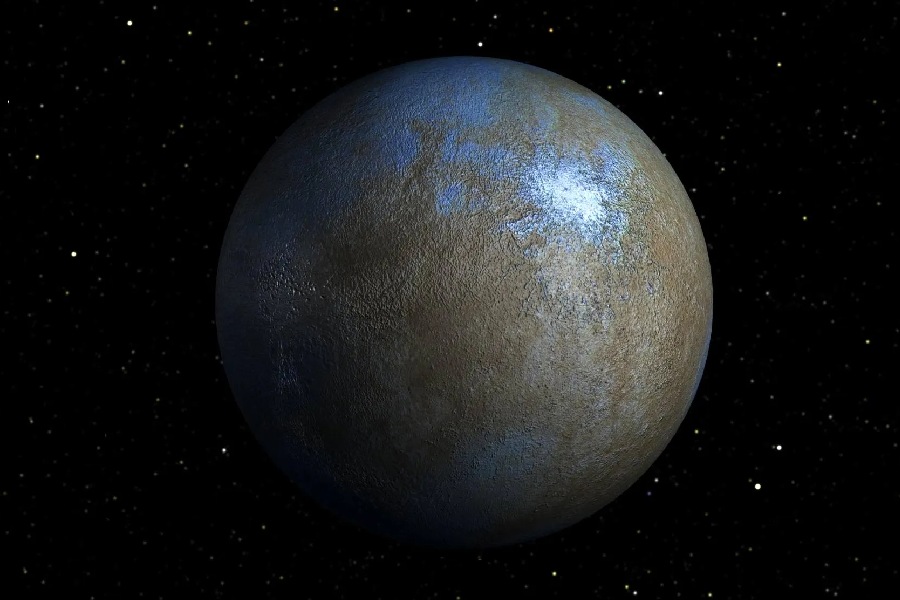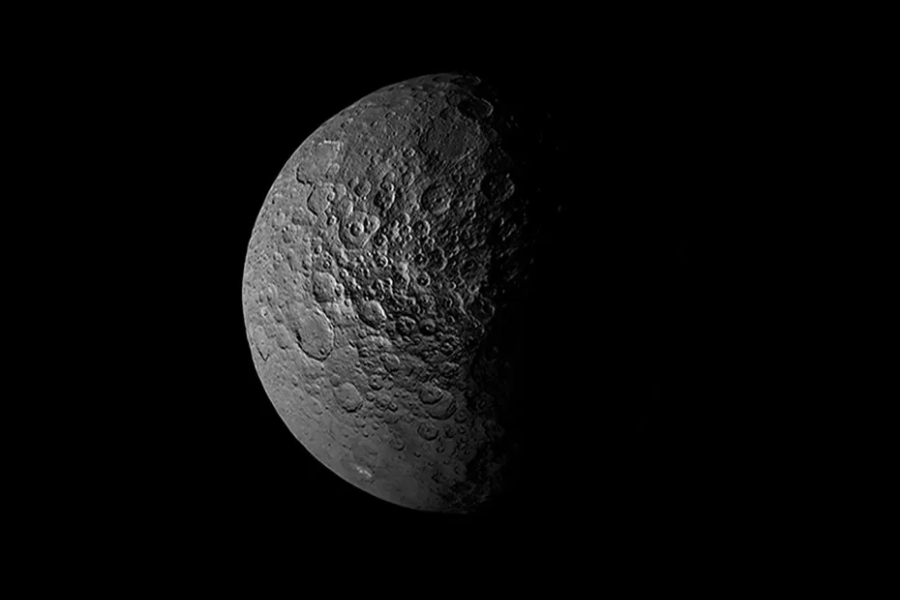Nestled within the vast expanse of the Solar System, between the orbits of Mars and Jupiter, lies a realm that has long captivated astronomers – the asteroid belt. Amidst this celestial graveyard of rocky debris, an enigmatic wanderer was detected, igniting a profound astronomical mystery.
Initial observations raised compelling questions that challenged contemporary scientific understanding. Was it an undiscovered planet or merely an asteroid? Its very nature sparked intense speculation, fueling an enduring quest to unravel its secrets.
As knowledge advanced, so too did perceptions of this celestial nomad, its classification evolving remarkably. When was Ceres discovered? Who first spotted this strange worldlet between the orbits of Mars and Jupiter?
This article explores the fascinating story behind the discovery of Ceres, the first object ever found in the asteroid belt between Mars and Jupiter. We will also discover how it was originally classified and the story behind its detection.

When Was Ceres Discovered?
When was Ceres discovered? Italian astronomer Giuseppe Piazzi discovered Ceres on January 1, 1801, marking a pivotal moment in astronomy.
This event not only identified Ceres as the first dwarf planet but also expanded our understanding of the Solar System. Piazzi spotted Ceres during his observations of the night sky, adding a new celestial body to the astronomical catalog.
Ceres’ detection set the stage for advancements in planetary exploration, fueled curiosity about the diversity of objects in space, and ultimately contributed to the evolving field of planetary science.
Piazzi’s search for a “minor planet”
Giuseppe Piazzi was an accomplished Italian astronomer who discovered Ceres. He became known for seeking what he called a “minor planet”. This was a hypothesized missing planet between the orbits of Mars and Jupiter.
The spacing between planets was expected to follow a mathematical relationship called the Titius-Bode law. But the law predicted another planet should exist where only asteroids orbit.
Predicted planet – Piazzi’s past discoveries
Piazzi searched the sky, believing an unseen planet must reside in the asteroid belt’s region. Finding and documenting such a world would confirm the suspected planetary layout. It would also advance Piazzi’s scientific standing.
So, he systematically studied that area of space, gathering precise positional data on stars nearby. Piazzi was director of the Palermo Observatory in Sicily for many years. He had previously discovered several comets through diligent observations.
Piazzi also compiled detailed star catalogs plotting precise stellar positions and brightness. This work laid the foundation for him to detect more elusive celestial motions.
His positional tables enabled the Italian astronomer who discovered Ceres to notice an unusual object moving independently from cataloged background stars. This minor planet was finally spotted on January 1, 1801.
Bright spots in Piazzi’s observations
On New Year’s Day in 1801, Piazzi was examining the sky between Mars and Jupiter as part of his nightly routine. He noticed a faint glowing spot that was not recorded in his detailed star catalog. Piazzi watched the bright dot closely over the next few nights.
Unlike stars that maintain position relative to each other, the bright spot Piazzi observed was slowly changing locations each night. This indicated it was an independent celestial object moving against the fixed background stars. The motion also did not match the paths of known planets or comets.
In addition to its unique motion, Piazzi observed the light of this moving target varied over days. This changing luminosity was new and distinct from normal stars. Characterizing this interesting point was a key finding requiring further data to study.
Piazzi robustly documented the object’s celestial position for 41 nights before losing sight of it. These regular positional measurements were essential to characterizing the elusive moving target. The measurements were also essential for eventually calculating the orbit of the moving target.

Confirmation of Ceres as a planetoid
Ceres slowly faded from view due to close passage near the glaring Sun. Piazzi’s diligent tracking for 41 days gave several positions along its orbit, but the data was insufficient to fully define Ceres’ orbital path. Without knowing its revolution time and trajectory, Ceres could not be relocated after it disappeared.
It took over a year until improved orbital predictions indicated where Ceres should emerge from behind the Sun. Several astronomers across Europe subsequently confirmed the object’s reappearance in late 1801, verifying Ceres as the first asteroid ever documented.
The evolving classification of Ceres
Upon its discovery, Ceres’ novelty and apparent significant size led Piazzi to initially classify it as a new planet, supporting theories about missing bodies between Mars and Jupiter. Further study, however, would reveal many more such objects alongside Ceres in that broad region.
As more small worlds like Ceres were found orbiting the Sun there, astronomers reclassified it as just another large asteroid rather than a full planet by the late 1800’s.
Today, appreciating key traits like its spherical shape and orbital residency amid other objects, Ceres stands designated as the very first dwarf planet discovered in our Solar System.
Naming Ceres as the Goddess of Agriculture
When the first asteroid was discovered, this new celestial object needed a relevant name. So, how did Ceres get its name? When astronomer Johann Bode first spotted it in 1801, he chose to name it Ceres after the Roman goddess of agriculture and the seasonal cycle of nature.
Honoring astronomical traditions
Ceres was an apt name choice symbolizing this small world while also fitting established traditions in astronomy. At the time, planets and other astronomical bodies were often named after Greek or Roman deities.
By naming his discovery after the goddess of the harvest, Bode followed this precedent within the field. The name also reflected the potential significance of Ceres as the first observed member of the asteroid belt residing between Mars and Jupiter.
Integrating Ceres into known cosmic constructs
While a relatively tiny world, Ceres has impacted astronomy’s progress ever since, just as its divine namesake influenced the annual agricultural fortunes of Rome. The name “Ceres” has become forever linked to expanding our understanding of the Solar System.
Ceres orbits between Mars, named for the Roman god of war, and Jupiter, the chief Roman deity. Using another Roman god’s name in this area of the Solar System provided symbolic consistency, as it situated Ceres within existing frameworks organizing knowledge of the Sun’s planetary children.
Conclusion
This exploration has revealed that the very first asteroid discovery occurred in 1801. Astronomer Giuseppe Piazzi detected the dwarf planet Ceres circling between Mars and Jupiter. Its detection marked the initial identification of Ceres within the asteroid belt. This kickstarted a line of Solar System investigation that continues today.
From Piazzi’s dedicated celestial tracking to name selection that maintained cultural, astronomical traditions, the discovery of Ceres expanded existing frameworks for organizing knowledge about our Solar System. As the first asteroid ever identified, it marked a pivotal milestone that shaped subsequent astronomical understanding.
Ceres persists today as an influential relic from that early era of surveying the skies using primitive telescopes.
Now that it’s clear when was Ceres discovered, you can better appreciate the timeline of evolution and the various milestones that our astronomers touched in their quest to understand our universe and outer space. This also helps us chart our incremental comprehension of the planets and their extending families.
